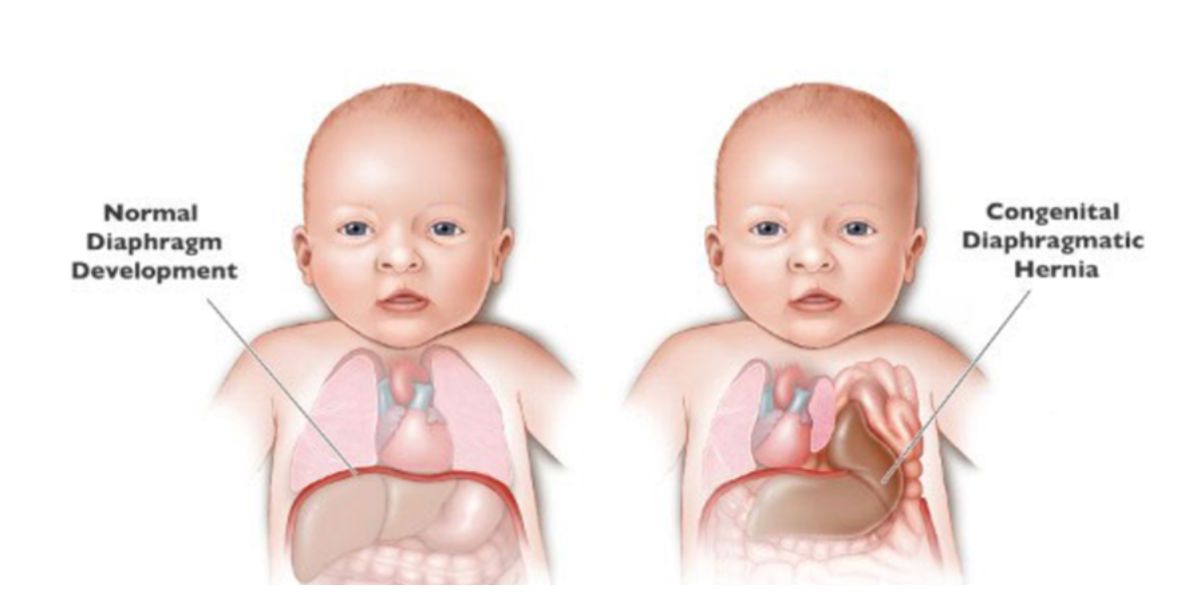Congenital diaphragmatic hernia (CDH) is a rare but serious condition that occurs in infants. In this guide, we will look into the intricate details of CDH, exploring its main causes and shedding light on the complexities surrounding this congenital anomaly.
Understanding Congenital Diaphragmatic Hernia
Congenital Diaphragmatic Hernia is a condition where there is an opening or hole in the diaphragm, the muscular wall that separates the chest cavity from the abdominal cavity. This opening allows abdominal organs to move into the chest cavity, hindering the normal development of the lungs.
Causes of Congenital Diaphragmatic Hernia
Genetic Factors
Research suggests a strong genetic predisposition to CDH. Individuals with a family history of CDH are at a higher risk of having a child with this condition. Specific genetic mutations and chromosomal abnormalities have been linked to the development of CDH.
Environmental Factors
Certain environmental factors during pregnancy can contribute to the occurrence of CDH. Maternal smoking and exposure to certain medications, particularly during the first trimester, have been identified as potential risk factors.
Fetal Development Issues
The development of the diaphragm occurs during early fetal stages. Any disruptions in this delicate process can lead to the formation of a hole or opening. This can be attributed to issues such as abnormalities in fetal lung development.
Diagnosing Congenital Diaphragmatic Hernia
Early diagnosis of CDH is crucial for effective management. Prenatal ultrasounds and fetal MRI scans are instrumental in detecting the condition. These imaging techniques can reveal the presence of abdominal organs in the chest cavity, prompting further investigation.
Treatment Options
Surgical Intervention
In many cases, surgical intervention is necessary to repair the opening in the diaphragm. This procedure aims to relocate abdominal organs to their rightful place, allowing the lungs to develop properly. The timing of surgery varies and is often determined by the severity of the condition.
Respiratory Support
Given that CDH directly impacts lung development, infants with this condition often require respiratory support. This may involve the use of ventilators or other advanced respiratory devices to assist breathing until the lungs mature.
Prognosis and Long-Term Outcomes
The prognosis for infants with CDH can vary, and factors such as the size of the diaphragmatic defect and associated anomalies play a significant role. Advances in medical technology and neonatal care have improved survival rates, but long-term outcomes can still be influenced by the severity of the condition.
Conclusion
Understanding the main causes of congenital diaphragmatic hernia is essential for early detection and effective management. Genetic and environmental factors contribute to the development of this condition, highlighting the importance of thorough prenatal care. While treatment options, including surgery and respiratory support, exist, the prognosis remains variable, emphasizing the need for ongoing research and advancements in medical science.


